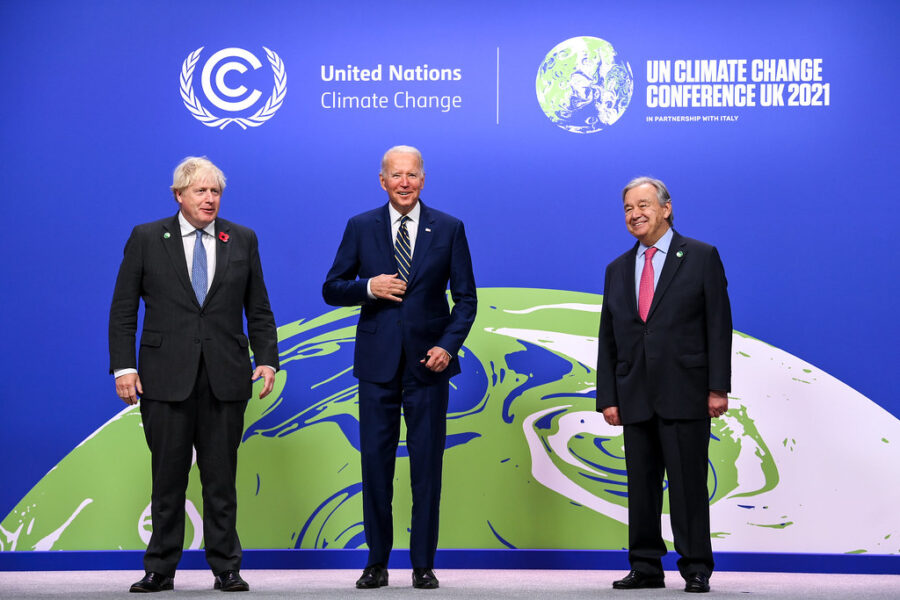The climate crisis is the defining issue of our time. From shifting weather patterns that threaten food production, to rising sea levels that increase the risk of catastrophic flooding, the impacts of climate change are global in scope and unprecedented in scale.
THE HUMAN IMPACT ON THE ENVIRONMENT
Over the last 200 years, modern energy, agriculture, and industrial practices have greatly increased the level of heat-trapping greenhouse gases in the atmosphere (especially carbon dioxide and methane). There is broad scientific agreement that the world is warming as a result, with damaging and unpredictable impacts on weather. The world is already experiencing the effects of unchecked climate change, including increasingly frequent hurricanes and damaging wildfires, which stand to threaten people, ecosystems, and economies.
THE ROLE OF THE UN
The UN is at the forefront of the effort to save our planet. In 1992, its “Earth Summit” led to the creation of the United Nations Framework Convention on Climate Change (UNFCCC) as a first step in addressing the climate crisis. The treaty committed signatories to avoiding dangerous human interference with the climate system and reducing emissions commensurate with their levels of development. President George H.W. Bush signed the treaty, and the Senate unanimously ratified it.
In 1998, the World Meteorological Organization (WMO) and United Nations Environment Programme founded the UN Intergovernmental Panel on Climate Change (IPCC) to provide governments with the best scientific information so policy makers could develop sound climate change policies. In 2014, the IPCC provided more clarity about the role of human activities in climate change when it released its Fifth Assessment Report. Its conclusion: climate change is real and human activities are the main cause.
The IPCC’s most recent report, on the physical basis of climate change, which was released in August 2021, found that climate change is widespread, rapid, and intensifying, with UN Secretary-General Antonio Guterres calling it a ‘code red for humanity.’ The report, helmed by the world’s leading climate scientists, reflects more clearly than ever before the causal links between human activity, climate change, and extreme weather events.
The report warns that while the pathway is extremely narrow, rapid reductions in CO2 and other greenhouse gas pollutants could still enable us to limit warming to 1.5°C and thereby avoid the most catastrophic impacts of climate change.
CLIMATE NEGOTIATIONS
After years of negotiations facilitated by the UNFCCC, including the Kyoto Protocol in 1997 and the Copenhagen Accord in 2009, a breakthrough was achieved with the Paris Agreement in 2015.
The agreement charted a new course in global climate efforts by bringing all nations together for the first time under a common framework to combat climate change. The agreement’s central aim is to keep the global temperature rise well below 2°C above pre-industrial levels while pursuing efforts to limit the increase to 1.5°C.
The agreement is based on national action plans, called Nationally Determined Contributions (NDCs), which are to be strengthened over time every five years starting in 2020. To help developing countries address the impacts of climate change, the agreement also reaffirms a commitment to mobilize $100 billion each year from public and private sources.
CHALLENGES AND STEPS FORWARD
Despite the adoption of the Paris Agreement, given the enormity of the task of putting the world on a low-GHG emissions trajectory, progress has been slow. Each of the past five years were the hottest on record, and recent reports have found that global emissions continue to rise, even in light of the slowdown of the global economy due to COVID-19.

Progress was severely impeded for several years when the previous administration withdrew from the agreement in June 2017–a forfeiture of global leadership that undermined efforts to stave off the worst effects of climate change. Within weeks of taking office in 2021, however, President Biden rejoined the Paris Agreement, announced a raft of ambitious climate actions, and called on world leaders to join him for a Leaders’ Climate Summit on Earth Day–April 21–to work on getting the world on track to meet countries’ climate commitments.
After a year-long delay due to the COVID-19 pandemic, world leaders, the private sector, and activists gathered for COP26 in Glasgow in November 2021 to take stock of progress, finalize the rules of the Paris Agreement, and chart a path forward. While leaders made some tangible progress, significant gaps remain, especially in the ambition and implementation of the pledges countries put forward. To keep temperatures from rising above 1.5°C, developed country emissions will need to continue to decrease rapidly, while emerging and developing countries such as China and India will need their emissions to quickly peak and then also similarly plummet. Unfortunately, that is still not the most likely scenario, and much more work will need to be done to ensure that national actions match international promises.
On the domestic front in the United States, President Biden established a new goal of reducing the country’s emissions by half by 2030 from a 2005 baseline. That ambitious goal is seen by experts as achievable with the right mix of climate regulation and legislation–assuming they can be passed and executed rapidly.